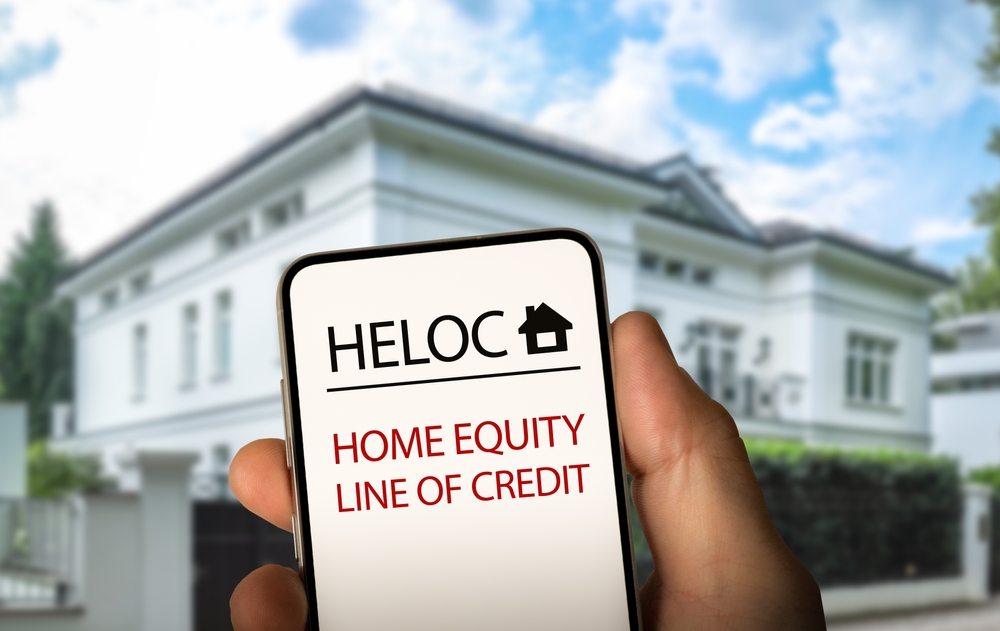You’ve built a valuable asset in your home equity, and now it’s time to tap into it wisely. Home equity loans and HELOCs can provide access to cash when you need it, but it’s crucial to understand the different options and how they work. From lump-sum loans to revolving credit lines, there’s a best fit for your financial goals. By understanding how to choose the right loan and manage your debt, you can unlock the power of your home equity and take control of your finances. Take the next step to unleash the potential of your home’s value and start achieving your financial aspirations.
Key Takeaways
Home equity is the difference between your property’s market value and outstanding mortgage balance, representing the portion of the home owned debt-free.
Traditional home equity loans provide a lump sum for specific purposes, while HELOCs offer a revolving line of credit for flexible borrowing.
HELOCs allow you to borrow and repay funds as needed, with interest only accruing on borrowed amounts and offering potential cost savings.
To qualify for a HELOC, you’ll need to meet lender requirements, including a sufficient amount of equity, a good credit score, and a manageable debt-to-income ratio.
Effective management of HELOC debt involves creating a budget, paying more than the minimum, and considering debt consolidation to avoid financial strain.
Understanding Home Equity Basics
As you consider tapping into your home’s value, it’s essential to grasp the fundamental concept of home equity, which is the difference between your property’s market value and the outstanding mortgage balance. This means that if your home is worth $300,000 and you owe $150,000 on your mortgage, you have $150,000 in home equity.
Think of it as the portion of your home that you truly own, free from debt.
As you build equity, you’re creating a valuable asset that can be leveraged to achieve your financial goals. Perhaps you want to renovate your kitchen, consolidate debt, or cover unexpected expenses. Whatever your needs, understanding home equity is the first step in unlocking its potential. By tapping into your equity, you can access cash when you need it most.
But before you do, it’s crucial to understand how home equity works and the various options available to you. By doing so, you’ll be empowered to make informed decisions about your financial future.
Types of Home Equity Loans
Two primary types of home equity loans are available to tap into your wealth: traditional home equity loans and home equity lines of credit (HELOCs). You’ll want to understand the differences between these two options to make an informed decision about which one is right for you.
Traditional home equity loans provide a lump sum of money upfront, which you can use for a specific purpose, such as consolidating debt, funding a major home renovation, or covering unexpected expenses. These loans typically have fixed interest rates and repayment terms, giving you a clear picture of your monthly payments and total cost.
On the other hand, HELOCs offer a revolving line of credit that you can draw from as needed. You’ll only pay interest on the amount you borrow, and you can reuse the credit line as you repay the borrowed amount. HELOCs often have variable interest rates and may come with annual fees or inactivity fees.
Both options have their advantages and disadvantages. By understanding the characteristics of each, you can choose the one that best aligns with your financial goals and needs.
How HELOCs Work and Benefits
With a HELOC, you’re approved for a maximum credit limit, and then you draw on that amount as needed, only paying interest on the borrowed funds, not the entire credit line. This flexibility is key to using your home’s equity efficiently.
You can use your HELOC to fund home renovations, consolidate debt, or cover unexpected expenses. Since you’re only borrowing what you need, you’ll save on interest and reduce your debt. Plus, the interest you do pay may be tax-deductible, further reducing your costs.
As you repay the borrowed amount, those funds become available again, allowing you to reuse the credit line as needed. This revolving credit feature makes a HELOC an attractive option for ongoing expenses or projects with variable costs.
Additionally, HELOCs often come with lower interest rates than credit cards or personal loans, making them a more affordable way to access funds. By tapping into your home’s equity, you can unlock the financial freedom to achieve your goals and improve your overall financial well-being.
Eligibility and Application Process
What do you need to qualify for a HELOC, and how do you apply for one?
To qualify, you’ll typically need to have at least 15% to 20% equity in your home, a good credit score (usually 620 or higher), and a debt-to-income ratio that’s not too high. You’ll also need to provide financial documents, such as pay stubs, tax returns, and bank statements.
When you’re ready to apply, you can usually do so online, by phone, or in person at a bank or credit union.
You’ll need to provide the required documents and fill out an application. Be prepared to answer questions about your income, employment, and debt. The lender will review your application and order an appraisal of your home to determine its value.
The entire process can take anywhere from a few days to several weeks, depending on the lender and the complexity of your application.
Be prepared to act quickly, as interest rates and terms can change rapidly. Don’t wait – start exploring your HELOC options today and take the first step towards unlocking the power of your home equity.
Managing Home Equity Debt
Now that you’ve secured a HELOC, it’s time to focus on managing the debt you’ve taken on, as failure to do so can put your home at risk. You must prioritize debt management to avoid financial strain and potential foreclosure.
Start by creating a budget that accounts for your HELOC payments, ensuring you’re making timely payments. It’s essential to pay more than the minimum payment to tackle the principal amount and reduce debt quickly.
Next, consider consolidating high-interest debts into your HELOC, which may offer a lower interest rate. This can simplify your financial life and save you money on interest.
Additionally, cut back on discretionary spending to free up more funds for debt repayment. Remember, your home is on the line, so it’s crucial to stay disciplined and committed to your debt management plan.
Frequently Asked Questions
Can I Use a Home Equity Loan to Purchase a New Home?
You can use a home equity loan to purchase a new home, but consider the risks, like accumulating more debt, and explore alternative options, like selling your current home, before making a move.
How Does My Credit Score Affect Home Equity Loan Interest Rates?
Your credit score significantly impacts home equity loan interest rates – a good score can snag you a lower rate, while a poor score may leave you with a higher rate, so prioritize improving yours to save big!
Are Home Equity Loan Proceeds Taxable as Income?
You won’t owe income tax on home equity loan proceeds, but you might face tax implications if you use the funds for non-home-related expenses, so use them wisely to avoid any potential tax headaches down the line.
Can I Deduct Home Equity Loan Interest on My Taxes?
You can deduct home equity loan interest on your taxes, but only if you use the loan proceeds to buy, build, or improve your primary residence, and you itemize deductions on Schedule A.
What Happens to My Home Equity Loan if I Decide to Sell?
“When you sell, you’ll typically need to pay off your home equity loan or line of credit (HELOC) with the sale proceeds, so plan ahead to avoid delays or penalties, and consider consulting a financial advisor to guide you through the process.”
Conclusion
Now that you’ve unlocked the power of your home equity, it’s time to take action. Don’t let your hard-earned equity sit idle – tap into it to achieve your financial goals.
Whether you choose a home equity loan or HELOC, remember to borrow responsibly and make timely payments. With careful planning, you can turn your home’s value into a powerful financial tool.
So, what’re you waiting for? Get started today and start building a brighter financial future!



